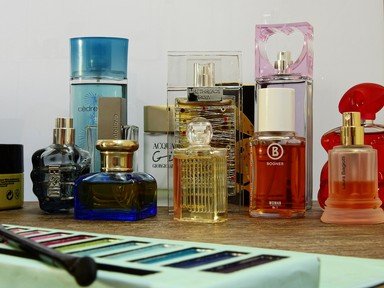Quiz Answer Key and Fun Facts
1. One of the earliest cosmetics of which we have a record is kohl, worn by Egyptian queens as long ago as the Bronze Age (from 3500 BCE). To what part of the body is kohl usually applied?
2. Around 3000 BCE, Chinese people are known to have mixed gum Arabic, gelatin, beeswax and egg, forming the basis of a clear cosmetic product to which assorted other ingredients, including colouring agents, could be added. To which part of their body was this applied?
3. Around 1000 CE, Abu al-Qasim Khalaf ibn al-Abbas Al-Zahrawi, also known as Abulcasis, devoted a chapter of his treatise "Kitaf Al-Tasrif" to cosmetics. What was the principal subject of his treatise?
4. In Japan, it became fashionable during the Heian Era (794-1185 CE) for certain women to apply white paste made from either rice-flour powder or lead-based powder mixed with water as a foundation to start their make-up routine. What name is commonly given to the women who adopted this distinctive make-up?
5. White lead has been popular over the centuries as a means of producing whiter skin. Which English queen used it in her official portraits to create a look sometimes referred to as 'the mask of youth'?
6. In the first decade of the 20th century, the French chemist Eugene Schueller developed a product that would make it much easier for women (and men) to make a fundamental change to their appearance. He called his synthetic hair dye 'Aureale'. What cosmetic company gained its existence on the basis of this invention?
7. In 1916 movie director D. W. Griffith wanted to enhance the appearance of an actress in his film "Intolerance". What beauty product is he credited with inventing?
8. In the 1920s, suntanned skin stopped being associated with workers, and became a trendy fashion statement. Which fashion designer returned from her holiday with a suntan, and started this new trend?
9. As someone who keeps my fingernails cut short so that they don't get in my way, I sometimes decide to apply false nails for special occasions. Of what material are contemporary false nails usually made?
10. You've heard reference to aspiring movie actors having their teeth 'capped'. What exactly does this cosmetic procedure involve?
Source: Author
looney_tunes
This quiz was reviewed by FunTrivia editor
linkan before going online.
Any errors found in FunTrivia content are routinely corrected through our feedback system.

